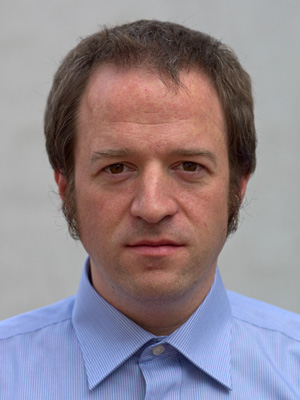Nanophotonics Group
1) Material processing of dielectrics with temporally shaped fs-laser pulses for nano-photonic applications (with Thomas Baumert group, CINSaT).
Depp air channels can be generated in materials like SiO2 by a single fs-laser pulse that has been tailored to address different ionization effects. Lateral resolution below the diffraction limit and high aspect ratios up to 25 can be achieved (fig. 1). The process has been studied with the help of FIB cross sections and photonic crystal structures generated to show the capabilities of the method.

2) Investigation on materials for nano-optical applications (with NTU Singapore, TU Darmstadt, Laser Laboratorium Göttingen and Cyril Popov group, CINSaT)
For most nano-optical effects the combination of dielectric and metallic materials is beneficial. Up to now mostly gold and silver are used for the metal parts. Although their high conductivity makes them quite useful for many applications, there are also limitations due to high losses and restrictions regarding the slayer quality and options for processing. Additionally, for some applications values of the dielectric function closer to zero (e.g. εr between -1 and +1) are required. Currently layers of highly doped materials (GaN, nano-crystalline diamond, ITO) and transition metal nitrides, perovskites as well as further materials are characterized. A mains focus lies on the modification of the dielectric function to tailor it for certain applications. Local modifications are investigated with the help of excimer laser annealing.
3) Chirped thin-film structures and colloidal quantum dot emitters (with NTU Singapore and Markus Maniak group, CINSaT)
Resonant thin-film structures with chirped layer sequences were investigated. The cavity of a conventional Fabry-Pérot filter is replaced by a chirped structure in which the varying layer thickness represents the cavity layer. The related distribution of the electrical field mode is following the distribution of the layer thickness variation. It could be shown that a more even distribution is obtainable with the same Q factor as in a Fabry-Pérot filter. By structuring a hollow cylinder (ring-like) into the chirped layers and infiltrating an emitter material in the inner core, a new kind of resonant light source can be fabricated. Colloidal quantum dots (cQD) have been chosen as emitter and a process for the infiltration developed. The convention processes from solution work very well for thin films, but for the hollow cylinder structure a mix of polymer and cQD had to be used. The optical properties of the new material mix were investigated and a successful infiltration demonstrated (fig. 2).

4) Bloch surface wave devices (with University of Jyväskylä and Thomas Fuhrmann-Lieker group)
Just recently this new topic on surface waves at dielectric layer/air interfaces was started. A light mode is localized at the surface of a periodic stack of dielectric layers (DBR mirror) if the k-vector of the mode is related to the condition of total internal reflection and the frequency is in the range of the stop-band of the DBR. The localization is similar to a surface plasmon-polariton, but avoid the restrictions of a metal layer (losses, only TM polarization). Our goal is to add a very thin layer at the surface which is used for light-matter interaction. This can be an emitter material, which couples to the surface mode and leading to a resonant effect. Furthermore, if the layer consists of different molecules, strong coupling of cavity mode and absorption of the main molecule fraction will lead to a polariton state, which again could be harvested by the second (low fraction) molecule type to provide and new way of surface chemistry.
Prof. Dr. Thomas Kusserow
associate members

- Telephone
- +49 561 804-4315
- kusserow[at]ina.uni-kassel[dot]de
- Location
- Universität Kassel
Fachbereich 16 - Elektrotechnik & Informatik
Institut für Nanostrukturtechnologie und Analytik
Heinrich-Plett-Str. 40
34132 Kassel
- Room
- 2116
